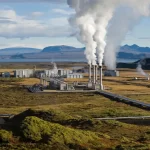Extreme heat, strong storms, droughts, floods and fires jeopardize food production.
Food production is both a driver and a victim of the climate crisis. Transforming the food system will require a plethora of actions, including increasing crop diversity, delivering climate predictions to farmers around the world, expanding conservation programs and offering farmers insurance that pays when an indicator such as rain drops or wind speeds are higher. or less than set threshold.
Huy Fong Foods, a company that produces 20 million bottles of sracha a year, has seen low stocks of hot red peppers in recent years, made worse by last spring’s crop failure.
It’s not just hot peppers, mustard producers in France and Canada said severe weather caused seed production to drop by 50% last year, leading to shortages of the spice on grocery store shelves.
So it’s no surprise that an unprecedented shortage of spices has loyalists scrambling to avoid a summer without spices.
Severe weather and drought conditions in Mexico
As extreme heat, strong storms, droughts, floods, fires, and changes in precipitation patterns affect the cost and availability of staple foods, including wheat, maize, coffee, apples, and chocolate, the climate crisis is increasing the intensity and frequency of extreme weather events—and putting food production at risk.
“Almost everything we grow and raise in the United States faces some climate stress,” said Caroline Dimitri, a professor of nutrition and food studies at New York University.
Wheat and cereals
Wheat and other grain crops are particularly vulnerable. On the Great Plains, where most of the wheat is harvested in the United States, drought has reduced winter yields.
Abandonment levels of winter wheat in the United States – primarily in Texas and Oklahoma – are the highest since 2002, and at the same time, floods threaten grain crops.
“This becomes important because the United States does not have a huge surplus and cannot really contribute at this very moment to filling the global gap in wheat supply due to the Ukraine crisis,” Dmitry said.
India
The impact of the climate crisis on grain crops extends far beyond the United States.
In India, a severe heatwave has damaged the wheat crop due to record temperatures throughout the spring and summer, with Delhi reaching 120 F in May. The government has imposed a ban on wheat exports, sending prices higher than the post-Russian invasion of Ukraine.
NASA study
A 2021 NASA study found that climate change could seriously affect global corn and wheat production as early as 2030, with corn crop production estimated to decline by 24%.
apple
Apples are another food that is already at risk. Last year’s apple harvests in Michigan and Wisconsin were compromised by heavy frosts in the spring, and according to the USDA, changes in climate, such as warming, can lead to lower yields, lower growth and changes in fruit quality.
“Humans are small creatures, so we still grow food and productivity goes up dramatically, but as the temperature goes up, the challenge gets bigger,” said Ricky Robertson, senior research fellow at the International Food Policy Research Institute.
Rising coffee prices by 70%
Severe weather affects the cost of coffee Between April 2020 and December 2021, coffee prices soared 70% after drought and frost destroyed crops in Brazil, the world’s largest coffee-producing country.
The economic repercussions could be profound, as it is estimated that up to 120 million of the world’s poorest depend on coffee production for their survival.
Shortage of chocolate products
Coffee growers in places like Costa Rica and Jamaica can’t just move to higher elevations in response to rising temperatures, said John Furlow, director of Columbia Climate College’s International Institute for Climate and Society Research, “Think of a mountain as a cone,” he added. Space decreases, so this is a risk.”
The climate crisis will also change where farmers can grow cacao, and shortages of chocolate products are expected in the coming years due to the dry weather in West Africa.
One study showed that if temperatures rose by two degrees Celsius, grape-growing areas could shrink by up to 56%, four degrees warming could mean that 85% of those areas would be unable to produce.
“This means farmers will have to increase irrigation – an adaptation strategy that will soon become unviable – migrate or stop production altogether,” said Linda Johnson Bell, founder of the Institute for Wine and Climate Change. “Climate change and its erratic weather patterns will change the map of wine in the world. Regions will disappear and others will appear.”
Robertson likens climate-related agricultural challenges to a game of musical chairs, as farmers have to move their produce in order to adapt to warmer temperatures and harsher weather.
“You will have to work harder and find more land to grow,” he said. “The places that become less good for growing things are greater than the new places they can visit. Small producers in particular are going to have a hard time trying to figure out their place in the musical chairs.”
Climate disasters and extreme weather are drivers of hunger
Last May, the Secretary-General of the United Nations, António Guterres, said that climate-related disasters and extreme weather are drivers of global hunger, and that 1.7 billion people have been affected by the climate crisis over the past decade.
Experts say that unless action is taken, we can expect to see an increase in food prices












